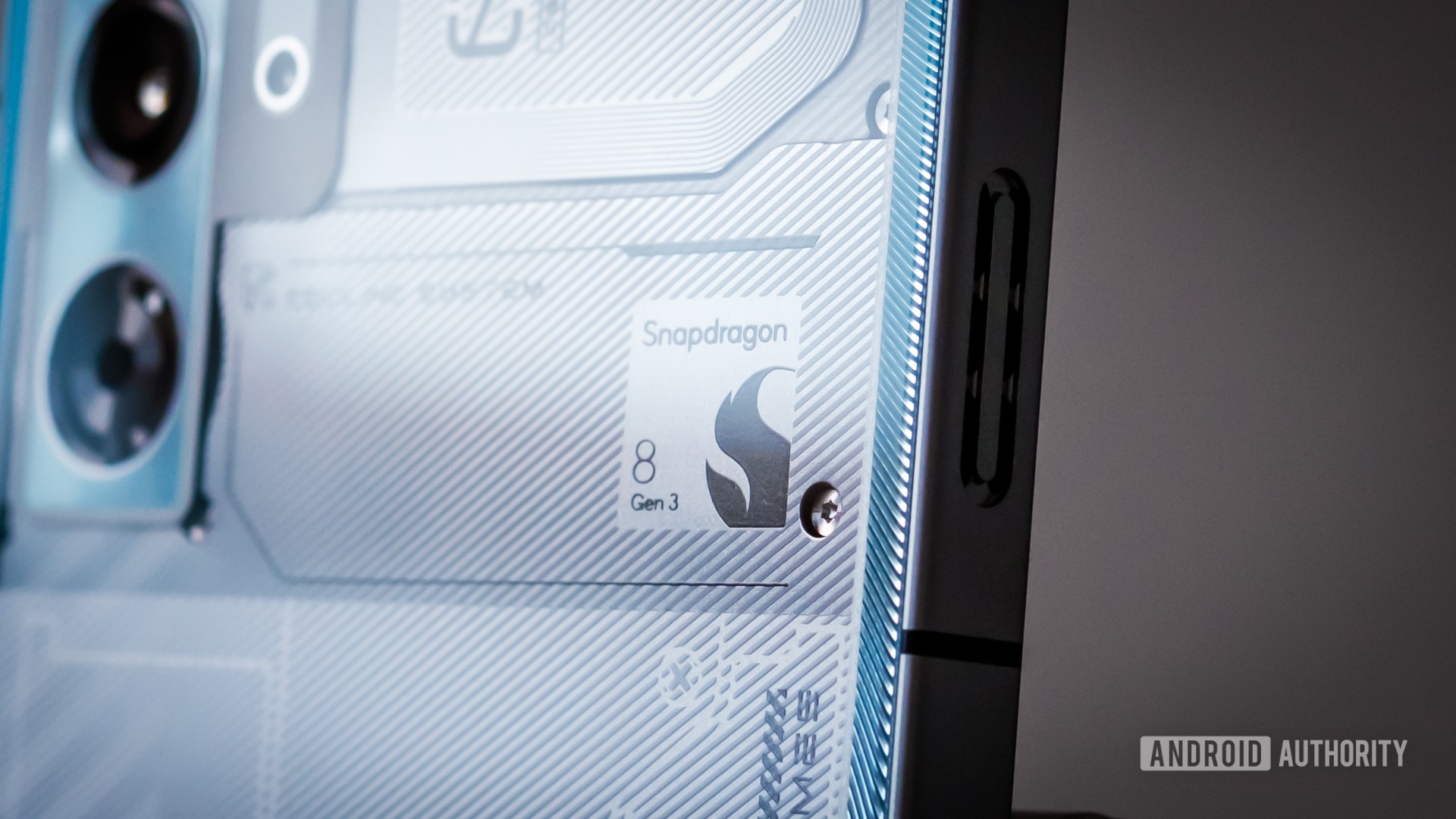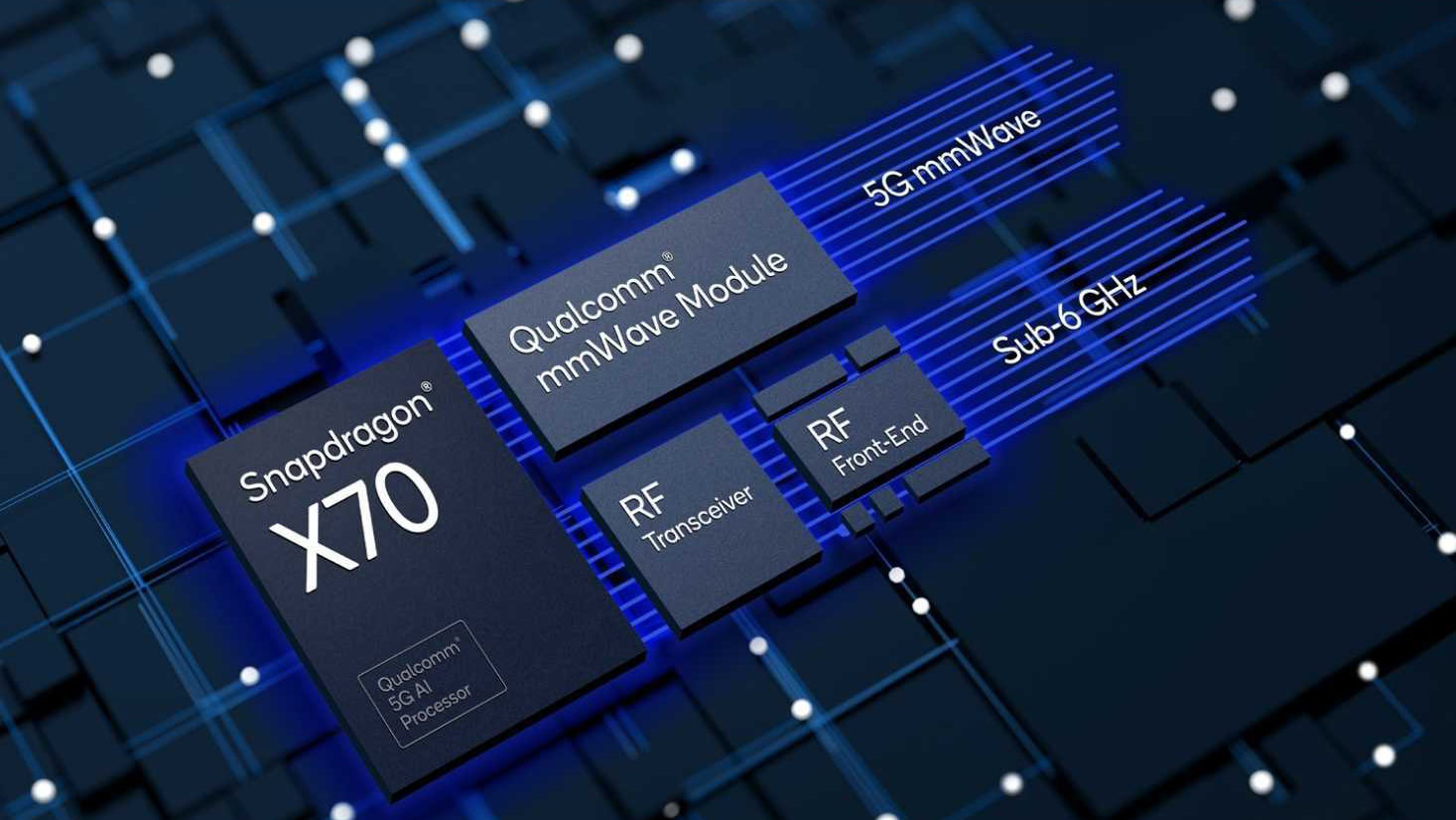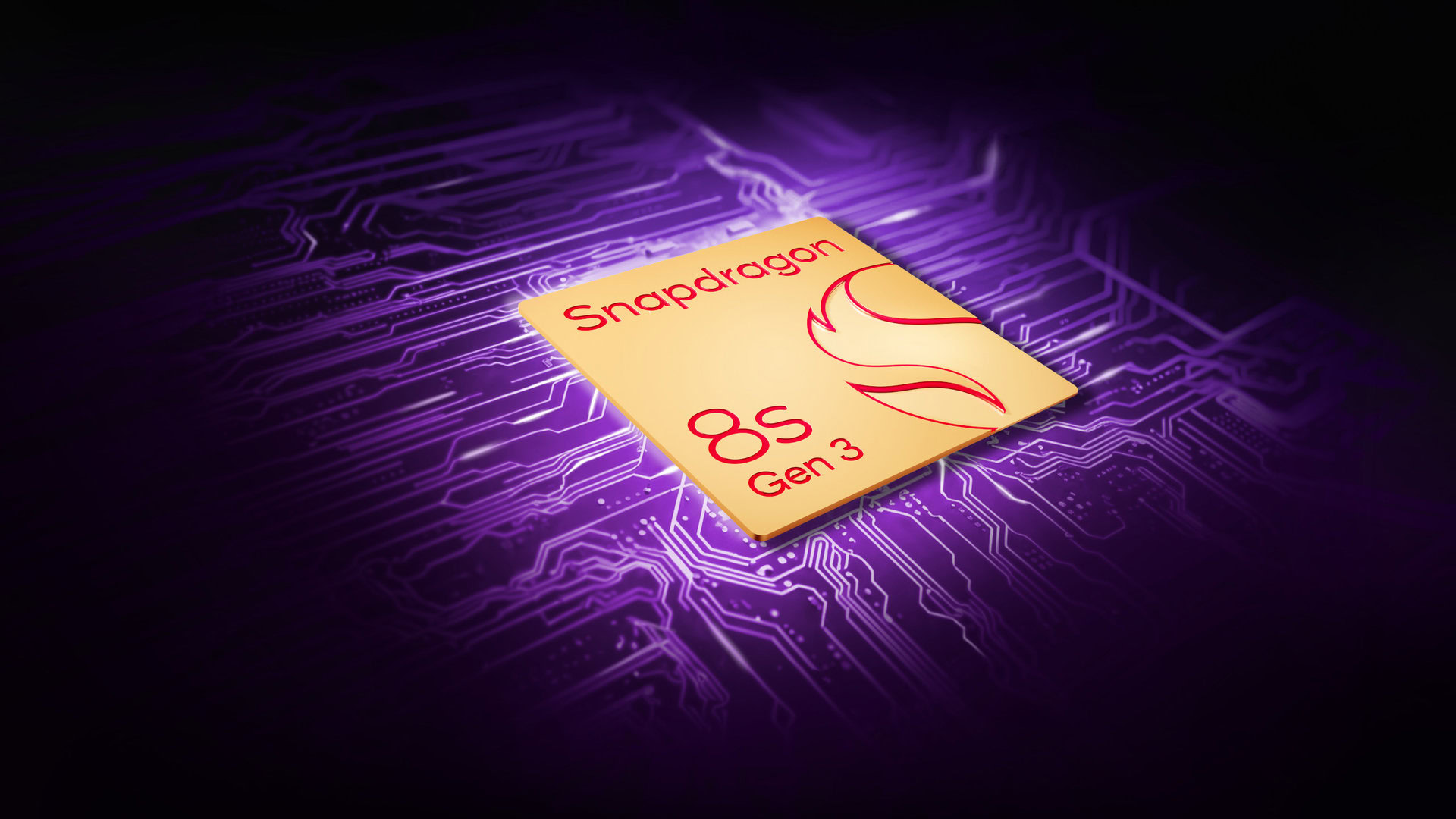Affiliate links on Android Authority may earn us a commission. Learn more.
Snapdragon 8 Gen 3 versus Snapdragon 8s Gen 3: How do these chips fare?
The Snapdragon 8 Gen 3 is Qualcomm’s most cutting-edge smartphone processor in 2024, powering phones like the Galaxy S24 series and many more. However, the company has just launched the Snapdragon 8s Gen 3.
This latest chipset is still positioned as a flagship-tier processor, but how does it differ from the Snapdragon 8 Gen 3? Here’s everything you need to know.
Specs
| Snapdragon 8 Gen 3 | Snapdragon 8s Gen 3 | |
|---|---|---|
CPU Config | Snapdragon 8 Gen 3 1x 3.3GHz (Cortex-X4) 3x 3.2GHz (Cortex-A720) 2x 3GHz (Cortex-A720) 2x 2.3GHz (Cortex-A520 Refresh) | Snapdragon 8s Gen 3 1x 3.19GHz (Cortex-X4) 4x 2.8GHz (Cortex-A720) 3x 2.0GHz (Cortex-A520) |
GPU | Snapdragon 8 Gen 3 Adreno (ray tracing support) | Snapdragon 8s Gen 3 Adreno (ray tracing support) |
DSP | Snapdragon 8 Gen 3 Hexagon (fused scalar, tensor, and vector) Mixed precision INT8/INT16 INT4 support | Snapdragon 8s Gen 3 Hexagon (fused scalar, tensor, and vector) Mixed precision INT8/INT16 INT4 support |
RAM support | Snapdragon 8 Gen 3 LPDDR5X 4,800MHz | Snapdragon 8s Gen 3 LPDDR5X 4,200MHz |
Camera support | Snapdragon 8 Gen 3 • 200MP single shot • 108MP single with zero shutter lag • 64MP+36MP with zero shutter lag • Triple 36MP with zero shutter lag • Hybrid AF • 10-bit HEIF image capture • HDR video • Dolby HDR photo • Multi-frame noise reduction • Real-time semantic segmentation for photos and videos (up to 12 layers) • Video super resolution | Snapdragon 8s Gen 3 • 200MP single shot • 108MP single with zero shutter lag • 64MP+36MP with zero shutter lag • Triple 36MP with zero shutter lag • Hybrid AF • 10-bit HEIF image capture • HDR video • Multi-frame noise reduction • Real-time semantic segmentation for photos and videos (up to 12 layers) • Video super resolution |
Video capture | Snapdragon 8 Gen 3 8K @ 30fps (HDR) 4K UHD @ 120fps 720p @ 960fps Night Vision Video Capture (4K/60fps) | Snapdragon 8s Gen 3 4K UHD @ 60fps 4K UHD @ 60fps (HDR) 1080p @ 240fps |
Charging | Snapdragon 8 Gen 3 Quick Charge 5 | Snapdragon 8s Gen 3 Quick Charge 5 |
4G/5G Modem | Snapdragon 8 Gen 3 X75 LTE/5G (integrated) 10,000Mbps down 3,500Mbps up | Snapdragon 8s Gen 3 X70 LTE/5G (integrated) 5,000Mbps down 3,500Mbps up |
Other networking | Snapdragon 8 Gen 3 Bluetooth 5.4 Wi-Fi 7, Wi-Fi 6/6E (802.11ax), Wi-Fi 5 (802.11ac), 802.11a/b/g/n | Snapdragon 8s Gen 3 Bluetooth 5.4 Wi-Fi 7, Wi-Fi 6/6E (802.11ax), Wi-Fi 5 (802.11ac), 802.11a/b/g/n |
Process | Snapdragon 8 Gen 3 TSMC 4nm (N4P) | Snapdragon 8s Gen 3 TSMC 4nm |
Tweaked CPU cores
Starting with the all-important CPU, both chipsets use the latest Arm cores. However, the Snapdragon 8s Gen 3 offers one Cortex-X4 big core, four Cortex-A720 medium cores, and three Cortex-A520 little cores. The older Snapdragon 8 Gen 3 differs by offering five medium cores and two little cores.
Qualcomm’s latest chip also sees reduced frequencies across the board. The new processor brings speeds of 3GHz, 2.8 GHz, and 2GHz, while the original Snapdragon 8 Gen 3 offers speeds of 3.3GHz, 3.2GHz/3GHz, and 2.3GHz.
There’s no word on the 8s Gen 3’s cache size, but we wouldn’t be surprised if this new chipset skimps in this area too in a bid to reduce costs. Either way, the reduced clock speed and slightly more conservative core layout means we should expect a slightly less powerful CPU than the Snapdragon 8 Gen 3. But it’s still a very potent combination for daily workloads and more.
A like GPU downgrade

While the Snapdragon 8s Gen 3 uses its big brother’s CPU tech for the most part, the GPU is a different story altogether. The 8s Gen 3 features 2022’s Snapdragon 8 Gen 2 GPU with a few tweaks. It’s still a potent GPU complete with ray tracing capabilities, but it’s less powerful than the Snapdragon 8 Gen 3’s GPU. It also lacks the global illumination feature seen on the more premium chipset, as well as the ability to output games to an upscaled 8K via an external display. The chipset does, however, match the 8 Gen 3 by supporting refresh rates up to 144Hz at QHD+ resolution or 4K resolution at 60Hz.
In saying so, Qualcomm told journalists during a media briefing that the Snapdragon 8s Gen 3 GPU brings improved ray tracing and improved performance and efficiency at low power. Mobile gamers should still be happy with this GPU, especially when paired with a great cooling solution.
AI for the latest features
The Snapdragon 8s Gen 3 follows in the 8 Gen 3’s footsteps by improving generative AI capabilities too. Much like the more premium chipset, the 8s Gen 3 supports multi-modal generative AI models (input text/audio/images to generate content), AI models with up to 10 billion parameters, and Google’s Gemini Nano. Qualcomm says this AI horsepower can be used for tasks like on-device image generation, on-device image expansion, and a generative AI assistant.
The Snapdragon 8s Gen 3's AI engine is slower than Qualcomm's top-end silicon, but it still enables plenty of features.
So what’s the catch? Well, it turns out that the Snapdragon 8s Gen 3’s AI engine is slower than the full-blown flagship chip. The company specifically says the 8s Gen 3 doesn’t support fast Stable Diffusion image generation — the Snapdragon 8 Gen 3 could generate images in under a second. The chipset doesn’t support the Speculative Decoding feature, either, which is used to boost generative AI performance.
Qualcomm declined to dish out the chip’s token rate, which is a measure of the processing time for AI models. So we don’t know how much slower the Snapdragon 8s Gen 3 is compared to the top dog. For what it’s worth, the Snapdragon 8 Gen 3 reaches 15 tokens per second with an AI model that has over 10 billion parameters.
Fast Connectivity

The new chip uses the X70 modem seen on last year’s Snapdragon 8 Gen 2 and supports satellite connectivity too. However, it’s interesting to note that the 8 Gen 2 is listed with a peak download speed of 10Gbps versus a slower 5Gbps for the new 8s Gen 3.
The Snapdragon 8s Gen 3 has the same FastConnect 7800 suite as the Snapdragon 8 Gen 3, though. This wireless connectivity suite supports features like Wi-Fi 7, Bluetooth 5.4, the aptX audio suite, and more.
Unfortunately, this new chip lacks Qualcomm’s XPAN technology that debuted on the Snapdragon 8 Gen 3. This allows you to use audio accessories (e.g. earbuds and headphones) via Wi-Fi instead of Bluetooth. It’s not a huge deal, but this omission could be disappointing if the tech ever takes off in a big way.
Cameras galore
Much like other recent flagship Snapdragon chips, the Snapdragon 8s Gen 3 brings a triple ISP (image signal processor) for seamless transitions between three cameras. The new chipset also boasts support for 200MP cameras, real-time semantic segmentation for photos/videos (up to 12 layers), and low-light video enhancements.
There are a few notable downgrades over the Snapdragon 8 Gen 3, though. You’ll have to settle on 4K/60fps video instead of 8K capture, as well as 240fps/1080p slow-mo instead of 4K/120fps. The chip also lacks Truepic authentication for verifying that photos were indeed taken with your phone camera.
Should I buy a Snapdragon 8s Gen 3 phone?

The Snapdragon 8s Gen 3 isn’t quite the greatest high-end Snapdragon processor of 2024, but that doesn’t mean you shouldn’t consider a phone with this chipset. We still have to benchmark a device with this processor, but we’re looking at loads of horsepower on paper, including a great GPU in theory, nifty AI capabilities, and slick camera features. Best of all, Qualcomm anticipates that phones with the Snapdragon 8s Gen 3 will retail for around $500 to $800. By comparison, Snapdragon 8 Gen 3 phones typically start at ~$650 and go all the way to ~$1,400 for conventional premium handsets.
Snapdragon 8s Gen 3 phones could retail at well under $800, so cheaper than 8 Gen 3 flagships.
Then again, people who want the best of everything and are okay with paying a premium should probably stick with Snapdragon 8 Gen 3 phones. These handsets cost a pretty penny but typically deliver the best performance, the highest video capture resolution, the best AI capabilities, and the fastest connectivity features. These devices also tend to offer extra features such as UWB support, impressive secondary cameras, and more.
You should also consider last year’s flagship phones running the Snapdragon 8 Gen 2 if you want a premium experience at a lower price. Yes, you miss out on the latest CPU tech and AI capabilities, but you’ve still got plenty of grunt and a variety of other extra features.